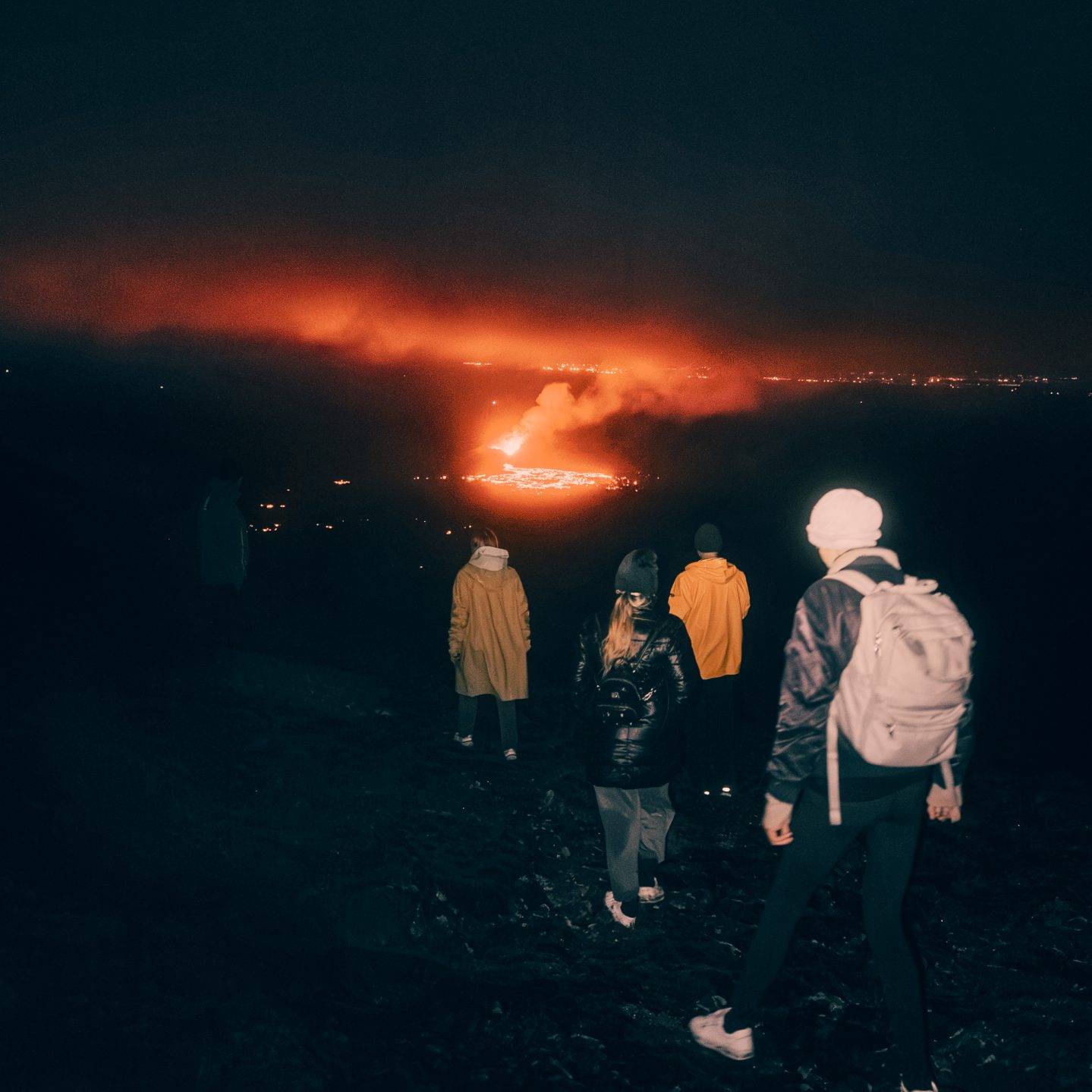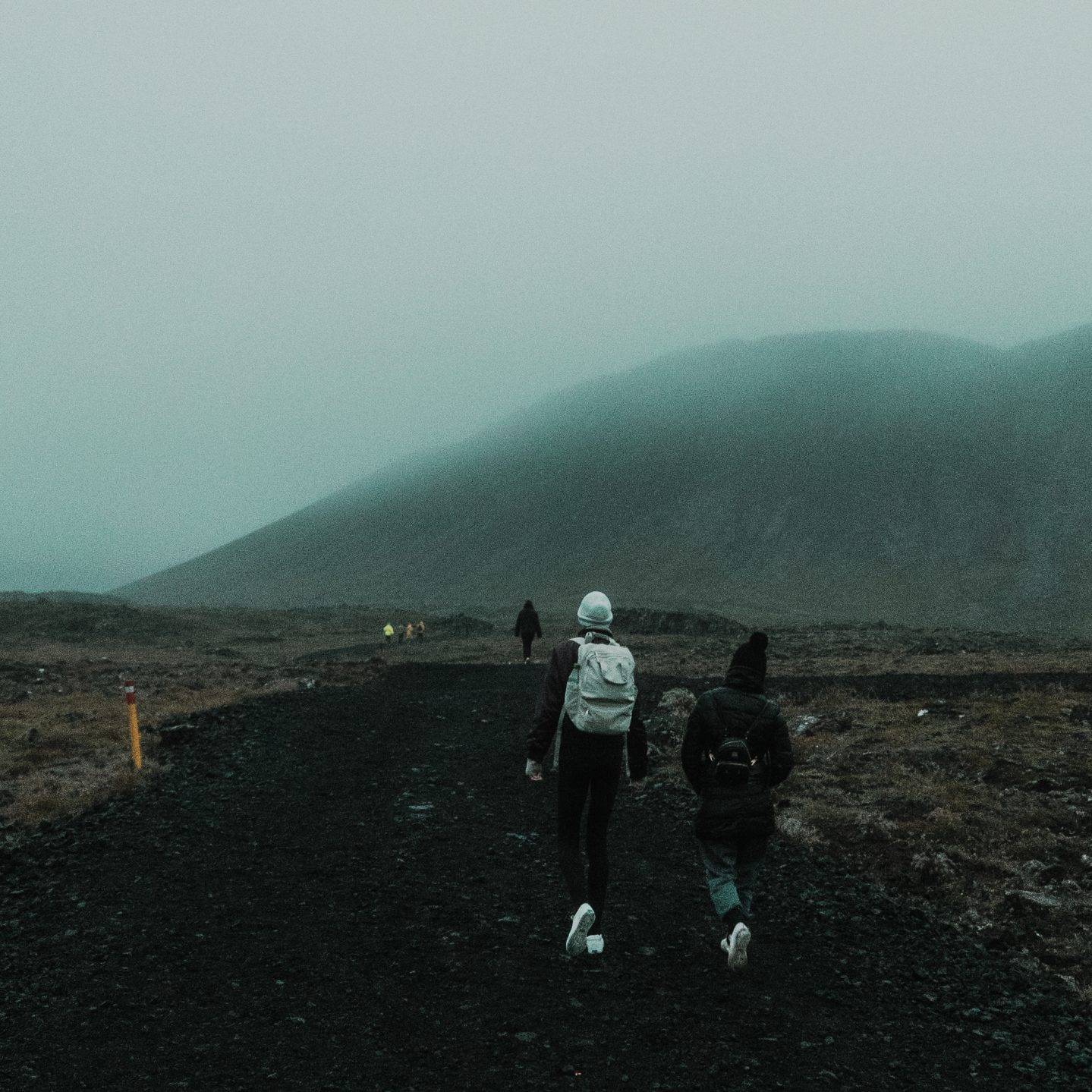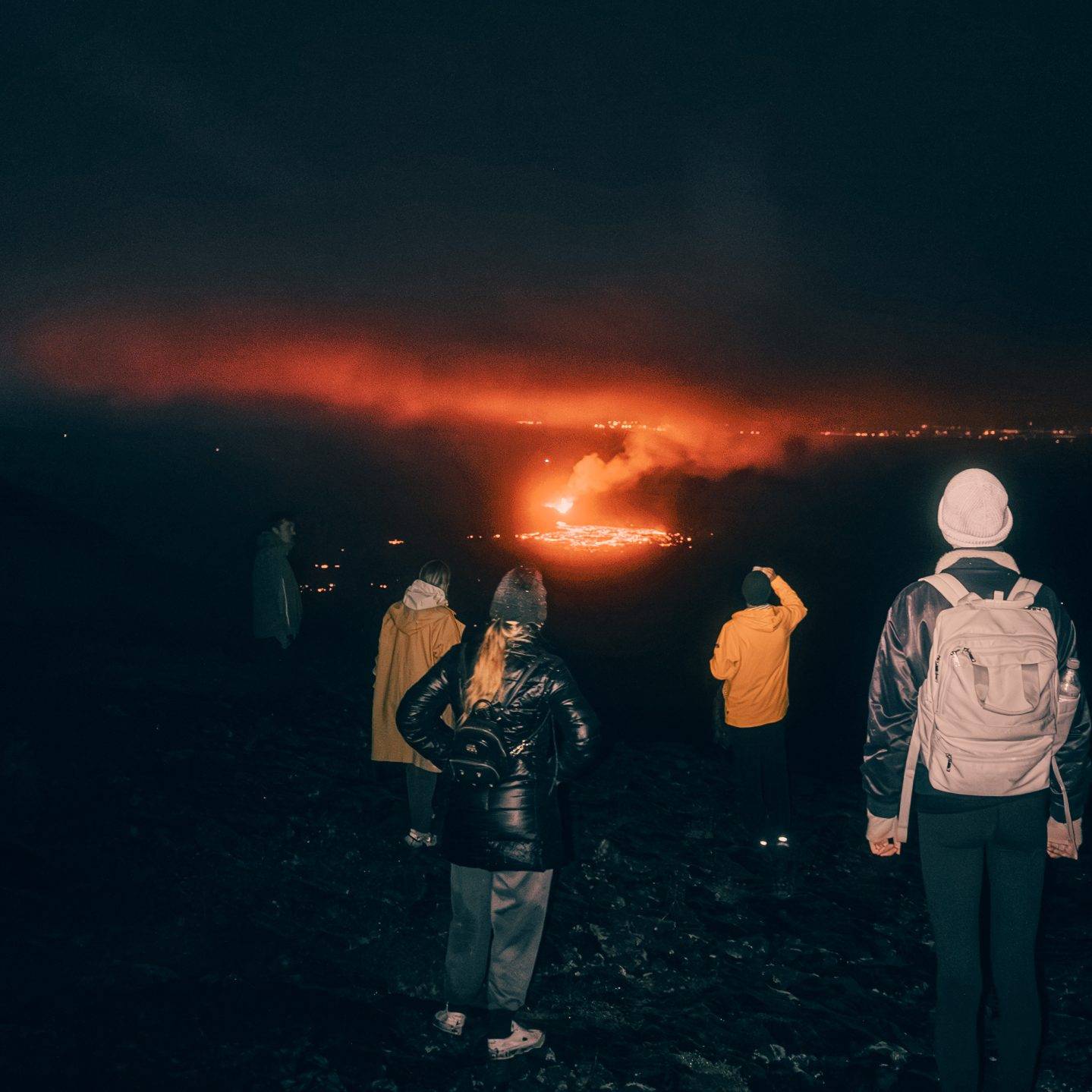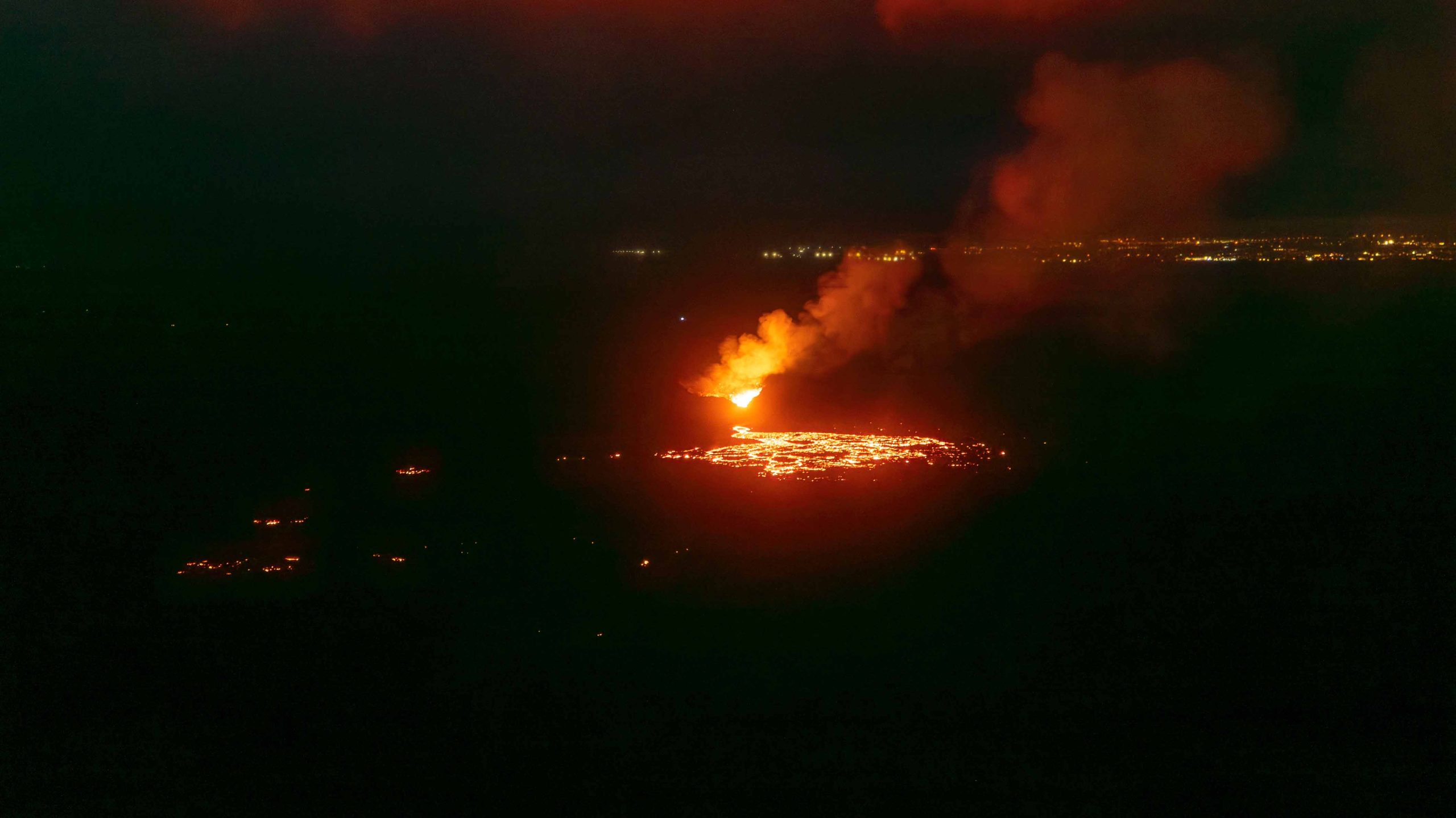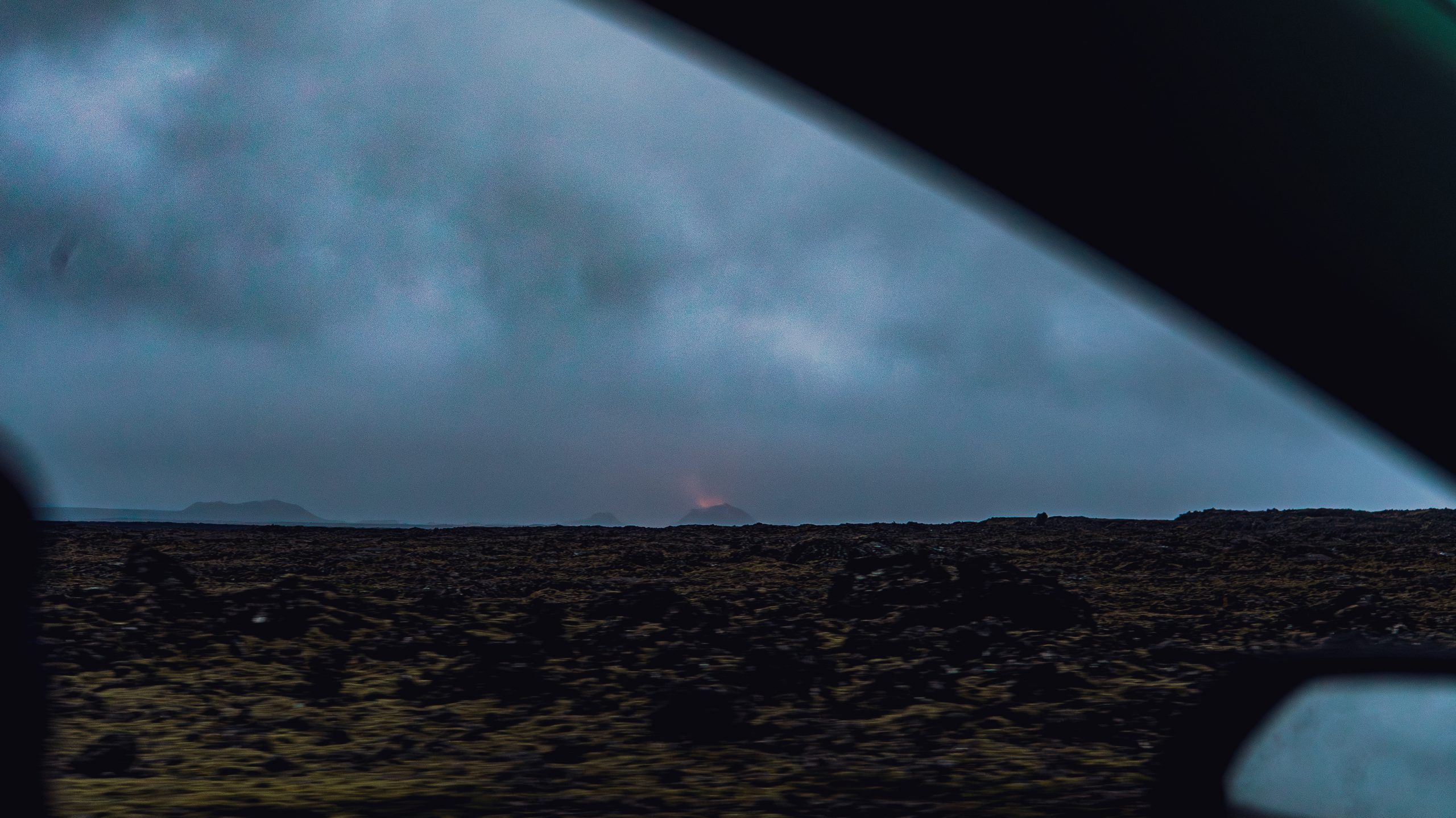Welcome adventurers! If you’ve ever dreamed of witnessing an erupting volcano up close, now is your chance. Iceland’s Sundhnúkur Crater Row began erupting on July 16, 2025, and it’s been putting on an awe-inspiring show on the Reykjanes Peninsula[Source]. This latest eruption – the ninth in the area since late 2023 – opened a fissure that extended farther north than previous recent eruptions[Source], creating brand-new lava fields and spectacular fire fountains. In this travel vlog-style guide, I’ll share the current status of the eruption, safety tips, how to reach the eruption, and everything adventure travelers and photographers need to know for an epic (and safe) volcano visit in August 2025. Grab your camera and let’s dive in!
Current Eruption Status and Safety (August 2025)
Current Eruption Activity
As of early August 2025, the eruption at Sundhnúkur Crater Row is ongoing but relatively steady. Activity has actually declined from its initial peak – only one crater on the original fissure is currently active, after the northern crater’s activity ceased on July 22[Source]. The eruptive output is moderate and lava flows are contained to uninhabited valleys, slowly creeping eastward into the Fagradalsfjall area without threatening infrastructure[Source]. In short, the volcano is putting on a reliable show for visitors while keeping its distance from towns.
Area Access and General Safety
Safety First: Even with its “friendly” behavior, this volcano demands respect. Icelandic authorities emphasize that the eruption site itself is off-limits to the public for now[Source]. Unstable ground, sudden gas emissions, and hot lava make it too dangerous to walk right up to the crater. Instead, visitors are asked to enjoy it from designated viewing areas a safe distance away – we’ll cover those in the next section. Always obey closures and signs; they’re there to protect you from hazards like sudden lava outbreaks or toxic fumes.
Volcanic Gas Hazards
One of the biggest concerns is volcanic gas pollution. This eruption is belching out sulfur dioxide (SO₂) and fine particulate haze (SO₄) that can drift with the wind[Source]. The gases aren’t usually visible, and you might not smell anything before they irritate your lungs or eyes. Authorities have reported volcanic haze and SO₂ being detected far from the crater, even in towns on the Reykjanes Peninsula and beyond[Source]. Pay attention to gas alerts: check the IMO’s gas dispersion forecast and real-time air quality maps (loftgaedi.is) before and during your trip[Source]. If the forecast shows winds blowing gas toward an area, you may need to limit outdoor activity or wear a mask. The Icelandic Meteorological Office and Environment Agency post daily updates – for example, on some July days the gas plume was expected to drift over towns like Keflavík and even parts of the capital area[Source].
Travel Conditions and Official Guidance
Official guidance for August 2025 is that travelers can continue their plans normally as long as they stay informed and exercise caution[Source]. There is no impact on flights (Keflavík International Airport is operating normally), and outside the eruption zone life goes on as usual[Source]. So don’t panic – Iceland is still safe to visit – but be volcano-smart. If you’re in the vicinity of the eruption and notice sulfur smells, haze, or throat irritation, leave the area and get to fresh air. Vulnerable individuals (children, pregnant travelers, anyone with asthma or heart conditions) should avoid exposure altogether on bad air days[Source]. Keep your car windows closed when driving near the plume, and use your vehicle’s recirculate air setting if needed[Source]. Most importantly, stay behind marked safety perimeters. Iceland’s search and rescue teams (ICE-SAR) are on site keeping an eye on visitor safety – follow their instructions. No selfie is worth singed boots or worse!
Viewing the Eruption: Access and Permitted Areas
You might be wondering, where can I actually see the eruption? The good news is there are several excellent viewing areas – the bad news is you can’t just walk right up to the new crater (at least not yet). The immediate eruption area near Sundhnúkur (by Stóra-Skógfell mountain) is closed to hikers until authorities deem it safe[Source]. But don’t worry: you can still get awesome views from safe vantage points on the edges of the lava field.
Main Viewing Options (as of August 2025)
Mt. Fagradalsfjall Trail (Path B)
-
Hike the same trail used for the 2021–23 eruptions to reach a hill overlooking the new eruption. This designated hiking route has been re-opened and even extended to offer views of the ongoing eruption from the south[Source]. It’s a 4.7-6.1 km hike one-way (depending on exact viewpoint) which takes about 1.5-2 hours each way[Source], so plan for 3-4 hours round-trip hiking. The trail starts near Fagradalsfjall (trailhead marked “Path B”) and climbs over rough terrain, but it rewards you with a panorama of the active crater and lava flows from a safe distance. Park in the designated lot (by route 427) and follow the marked trail posts. Tip: Start early in the day and check gas dispersion forecasts before heading out[Source] – this trail is exposed, and gas can pool if winds shift. Rangers may temporarily close the trail if conditions become hazardous, so heed any signage.
Roadside Viewpoints (West/North)
-
For those who aren’t up for a long hike, there are a couple of drive-up viewing spots where you can see the eruption glow from afar. Along Road 43 (Grindavíkurvegur) west of the eruption, look for turnout areas near Arnarsetur (an area of older lava field) and Arnarseturshraun – these spots have become informal viewing areas where you can park and glimpse the eruption on the horizon[Source]. Likewise, from the Reykjanesbraut (Road 41) near Vogar and the B-24 bomber memorial pull-off, you can see the volcanic plume and glow in the distance[Source]. These roadside vistas don’t require any hiking, making them popular for quick stops or night viewing. Important: Do not stop on the shoulder of the highway itself! Officials warn not to park along Route 41 between Keflavík and Reykjavík[Source] – it’s a high-speed road. Use proper parking areas or scenic pull-offs to avoid causing accidents. Also, these distant viewpoints are best after dark or in twilight, when the lava glow and fireworks are visible. In daylight the eruption might just look like a faint plume from these spots.
Roadside Viewpoints (West/North)
-
Edge of the Lava Field (South side) – Depending on eruptive activity and safety updates, authorities have sometimes allowed guided groups to approach the edge of the new lava flow from the south. As of late July, visitors were permitted to hike to the cooled lava field edge (but not onto it!), getting a closer look at fresh lava rock while still keeping a safe distance from any active lava[Source]. This requires trekking off the main path, and typically is done in guided tours or with ranger supervision. Always ensure the area is officially open and never attempt to step on new lava crust – it may look solid, but underneath it’s still molten and dangerously hot[Source]! If you go near the lava field, stay on older solid ground and be mindful of heat radiating from the flow.
No matter which viewpoint you choose, respect all marked boundaries. The and may adjust access daily[Source]. If conditions worsen (e.g. a new fissure opens or gases concentrate), they will close trails or roads as needed. Conversely, if the eruption calms down, they might open up closer access over time. Stay flexible and check official channels like Safetravel.is or Visit Reykjanes for the latest access info before you head out.
Getting There: Transportation to the Eruption Zone
Location of the Sundhnúkur Eruption
The Sundhnúkur crater row eruption is located on the Reykjanes Peninsula in southwest Iceland, not far from Keflavík Airport and the town of Grindavík. In fact, Sundhnúkur is a row of craters just outside Grindavík in the Svartsengi volcanic system[Source] – the same region where the famous Blue Lagoon is located. This makes it relatively easy to reach from Reykjavík and other tourist hubs.
Driving to the Eruption Site
The simplest way to get there is by car. From Reykjavík, it’s about a 45-50 minute drive (roughly 50 km) via Route 41 (Reykjanesbraut) heading southwest toward Keflavík, then Route 43 toward Grindavík. All the main roads are paved and currently open[Source]. As you approach Grindavík, you’ll likely see the eruption’s steam or glow on the horizon. Parking: Follow the signs or officials’ directions to designated parking areas near the trailheads or viewing points (in previous eruptions, large gravel parking lots were set up on side roads). Do not park randomly on highways or in mossy lava fields. Police have explicitly instructed visitors not to park on the shoulder of Route 41 or other main roads for safety[Source]. Use the established lots and be prepared for a parking fee (during past eruptions, local landowners charged fees at trailhead lots – bring some cash or card just in case).
Public Transportation Options
There is no direct public bus to the volcano site, but you can get part of the way. Buses run from Reykjavík to Keflavík and Grindavík; from there, however, you’d need a taxi or a lot of walking to reach the viewing trails. Given the logistical hassle, most travelers either rent a car or join a tour. If you don’t drive, see the next section on tours – many will pick you up in Reykjavík or Keflavík.
Volcano Shuttles and Guided Tours
A convenient new option this summer is the “Volcano Shuttle” Super Jeep service – a few tour companies are running specialized 4×4 shuttles that will take you off-road right up to the new lava fields and viewpoints[Source]. For example, one operator offers daily departures in modified jeeps, allowing you to skip the long hike and get within a safe distance of the eruption in about 90 minutes[Source]. These shuttles aren’t cheap, but they’re a thrilling ride and save your legs. Alternatively, standard tour buses won’t go off-road, but during previous eruptions some bus companies ran shuttles to the main trailhead from Reykjavík. It’s worth checking with Reykjavík Excursions or other tour providers if any temporary bus service is available. Of course, classic guided tours (see next section) will handle all transport as well.
Rental Car Tips and Road Safety
If you rent a car, a 2WD vehicle is usually fine to reach the parking areas in good weather. The roads to Grindavík and near Fagradalsfjall are paved. But if you plan to explore other parts of Reykjanes’s rugged terrain or if there’s any chance you might drive on rougher tracks for a closer look, consider a 4×4. Always check Iceland’s road conditions website for any closures (especially if earthquakes have affected local roads). And fill up on gas before heading out – gas stations are available in Keflavík and Grindavík.
Photography and Videography Tips for the Eruption
A Visual Feast for Photographers and Filmmakers
Calling all photographers and filmmakers – this eruption is a visual feast unlike anything else. Whether you’re a pro with a DSLR or just using your smartphone, you can capture amazing footage if you come prepared. Here are some vlog-style tips from my experience and the experts.
Stabilize for Success
Volcano scenes often require shooting in low light (to really see that lava glow) or using zoom lenses. A sturdy tripod is your best friend for sharp shots and stable video[Source]. The Reykjanes area can be very windy, so weigh your tripod down or hang your camera bag from it for extra stability, and never leave it unattended in gusts[Source]. If you’re filming video, consider bringing a gimbal or at least use your camera’s stabilization – nobody wants shaky lava footage.
Lens Choices for the Field
Ideally bring two main lenses: a wide-angle (around 16-35mm) to capture the sweeping landscape and sky, and a telephoto (like 100-300mm) to zoom in on the crater and lava details[Source]. The wide shots will give context – think glowing river of lava snaking through valleys under the midnight sun. The telephoto will let you fill the frame with spurting lava fountains or close-ups of lava oozing. If you have a spare, a mid-range (50mm) or even a fisheye for creative shots can be fun[Source]. But don’t overpack – you’ll be hiking, so better to carry a couple of reliable lenses than every piece of glass you own[Source].
Mastering Camera Settings for Lava
Shooting volcanic lava is a bit tricky because of the extreme contrast – bright, hot lava and dark surroundings. Use manual exposure if you’re comfortable: try a fast shutter (1/1000 or faster) to “freeze” lava bombs in mid-air during explosions, or a slower shutter (1-5 seconds) at night to create silky lava flows and illuminate the foreground with lava glow. Bracket your shots if uncertain – take multiple exposures and blend later, or shoot RAW for maximum adjustment range[Source]. For video, consider using an ND filter in bright conditions to keep your shutter speed manageable. And always check your histogram – it’s easy to blow out the highlights on lava. Slight underexposure is better; you can recover shadows later, but clipped lava will lose its detail.
When to Shoot: Timing Is Everything
For the most dramatic shots, plan to shoot after sunset or before sunrise when the lava’s neon glow contrasts against a twilight sky. Summer in Iceland means very short nights, but from late July onward it does get dark for a few hours. Blue-hour lava shots are magical – the sky turns deep blue and the lava looks even more intense. If you’re lucky enough to get clear skies and stay out late, you might capture stars or the Milky Way above the eruption (best in late August when nights are darker). And who knows, possibly even the Northern Lights making an early appearance over the volcano – it’s rare that early, but not impossible. Imagine auroras dancing over an erupting volcano! (One can dream.)
Drone Footage: Rules and Reality
Drones can get phenomenal aerial shots of the eruption – flowing rivers of lava, the full length of the fissure, etc. However, drone usage is heavily regulated in Iceland, especially around an eruption. First, there may be temporary flight restrictions near the volcano due to helicopter traffic (always check notices). If drones are allowed, follow all rules: keep below 120 m altitude, don’t fly over crowds, and label your drone with your contact info as required by Icelandic law[Source]. Only fly in good weather; high winds or updrafts from the hot crater can send your drone into an unpredictable frenzy (or a lava bath!). Also, be mindful of volcanic gases which can corrode your drone or reduce visibility. Pro tip: bring spare drone batteries – cold air and wind can drain them fast. And capture a mix of video and stills. A top-down shot of the glowing crater at night or a slow cinematic pan across the lava field can elevate your vlog from cool to mind-blowing. Just remember to enjoy the moment too. Don’t spend your entire visit staring at a screen – take a few minutes to soak in the raw power of nature with your own eyes.
Protecting Your Gear in Volcanic Terrain
Volcanic environments can be harsh on equipment. Fine ash and “vog” (volcanic smog) might settle on your camera, so bring a soft cloth or lens wipes. A rain cover or waterproof bag is essential – Iceland’s weather can switch from clear to pouring rain quickly[Source]. If you’re shooting near fountaining lava, be aware that tiny glass fibers (Pele’s hair or “witch’s hair”) can be lofted by the wind[Source]. These can scratch lenses or get in eyes – wearing glasses or goggles can help, and keep your gear zipped up when not in use. Lastly, extra batteries are a must[Source]. The cool Icelandic air (and time-lapses through the night) will sap battery life. Store spares in an inner pocket to keep them warm.
Final Tip: Don’t Forget to Look Up
Whether you’re vlogging with a GoPro or composing fine art shots, an erupting volcano offers endless creative angles. Take your time, try different perspectives (wide shot with some foreground vs. zoomed-in abstract of lava), and stay safe while you capture the magic. And don’t forget, sometimes the best memory is just standing there, feeling the rumble and warmth, without any camera at all.
Guided Tours vs. Independent Visits
Guided Tour or Independent Visit?
Should you join a guided volcano tour or go independently? It really depends on your comfort level and budget. Here’s a breakdown to help you decide.
Guided Tours: Safe, Informative, and Scenic
Going with an experienced guide can greatly enhance both safety and enjoyment. Numerous local tour operators sprang into action as soon as the eruption began. Options range from hiking tours with knowledgeable guides to helicopter flights for a bird’s-eye view. A guided hike will typically include transport from Reykjavík or Grindavík, gas masks if needed, and a guide who knows the safest route and all the geology facts. Some companies even have volcanologists or photographers leading tours, so you get expert commentary (and help finding the best photo spots!). If hiking isn’t your thing, consider a volcano helicopter tour – these are unforgettable. You’ll soar above the erupting fissure and lava field, hovering at a safe distance while snapping incredible photos. As of August, foot access to the crater is restricted, so helicopter tours are the only way to get an “up-close” look directly over the crater[Source]. Helicopters depart from Reykjavík or from a small airport near the Blue Lagoon, and while pricey (think $300-$500+ per person), it’s a once-in-a-lifetime thrill to see molten lava from the air.
Super Jeep Tours: Off-Road Without the Hike
Super Jeep tours are another adventurous option. These tours use 4×4 trucks to drive as close as possible (legally) to the eruption. For example, the “Volcano Shuttle” I mentioned earlier is essentially a guided super-jeep tour – you’ll join a small group and rumble over rough tracks to a prime viewing spot[Source]. No slogging up mountains required, and they often depart in late afternoon to catch sunset at the volcano. Make sure any tour operator you choose is legitimate and follows safety guidelines (look for ones linked on official tourism sites or with good reviews).
Independent Visit: Freedom with Caution
If you’re an experienced hiker and well-prepared, you can absolutely visit without a guide. Thousands of people have been trekking to recent eruptions on their own. The key is preparation: monitor the official updates, carry proper gear (see next section), and use common sense. Start hikes early enough that you’re not caught returning in total darkness (unless you’re purposely doing a night shoot, in which case have headlamps and maybe don’t go solo). Always let someone know your plans. One benefit of going independent is flexibility – you can choose the perfect weather window or go at night for photographs. Just remember, independent doesn’t mean alone. You’ll likely meet many fellow hikers on the trail, and it’s wise to stick to the crowd for route finding and support. If conditions look sketchy (bad weather, strong gas smell, etc.), be ready to turn back. Iceland’s Civil Protection might also limit access to guided groups only if things get dangerous, so double-check if any such rule is in effect on the day.
When to Go: Local Advice for the Best Views
Local Tip: Whether guided or not, consider timing your visit for either early morning or late evening. Crowds are thinner and the lava’s glow is more vivid in low light. Sunset and sunrise (which are only a few hours apart in Iceland’s summer) often paint the sky in dramatic colors to complement the orange lava – a photographer’s dream!
Support the Locals, Choose Your Style
Lastly, if you do go with a tour, you’re also supporting the local community (many of whom in Grindavík have had a rough time with evacuations and quakes in recent years). And guides can take the stress out of logistics. But if you’re the DIY type, Iceland is one of the safest countries to explore – just respect Mother Nature and you’ll be fine.
Where to Stay: Nearby Accommodations
Staying in Grindavík: Closest to the Action
After a long day of volcano viewing, you’ll want a comfortable spot to crash. The closest town is Grindavík, a small fishing town just a few kilometers from the eruption site. Grindavík thankfully remains open to the public (earlier evacuations were lifted once it was clear the lava wasn’t heading toward town)[Source]. In Grindavík you’ll find a couple of guesthouses, lodges, and restaurants. Staying here puts you as close as possible – you might even see the eruption’s glow from town on a clear night!
Blue Lagoon Area: Spa Comfort with a View
Another popular option is to stay near the Blue Lagoon (around 10 km north of Grindavík). The Blue Lagoon resort has its own hotels – including the Silica Hotel and the luxury Retreat Hotel – and there’s also the cozy Northern Light Inn nearby. Both the Blue Lagoon facilities and the Northern Light Inn are open and operating normally despite the eruption[Source]. In fact, soaking in the Blue Lagoon’s hot geothermal waters with a volcanic plume on the horizon is quite the Icelandic experience! (Pro tip: Check with the hotel about any odor of sulfur on days when the wind blows the plume north – they sometimes adjust operations if air quality briefly dips, but overall it’s safe and unaffected[Source].)
Reykjavík and Keflavík: More Options, Short Drive
If you prefer city conveniences, Reykjavík is an easy 45-minute drive and offers the full range of hotels, hostels, and Airbnbs. Many travelers base themselves in Reykjavík and do the volcano as a day trip or evening trip. Keflavík (Reykjanesbær) is even closer – only 20–30 minutes from the eruption area – and has several hotels (plus the international airport, useful for early flights). Keflavík’s hotels are used to late check-ins from airport travelers, so that can be handy if you go volcano hunting at night and return late.
Book Early and Be a Respectful Guest
Wherever you stay, book early. Summer 2025 tourism in Iceland is very busy, and the volcano’s popularity means nearby accommodations can fill up fast. Also, be a good guest: if ash or mud gets on your clothes or gear, shake it off before entering hotels, and don’t hang sulfur-scented jackets in a tiny guesthouse room (your roommates will thank you!).
Rules, Restrictions and Environmental Etiquette
Know the Rules: Respect Nature and the Law
Visiting an Icelandic volcano comes with a few important rules – both legal regulations and unwritten codes of respect for nature. Here’s what you need to know and follow.
Respect Closed Areas
This can’t be said enough – if an area is roped off or signposted as closed, do not cross it. The eruption site is under constant monitoring and the restricted zones can change. As of now, the entire immediate eruption zone is officially closed for safety[Source], with access only allowed up to certain viewing points. It’s actually against the law to ignore Civil Protection orders, and you could face fines (not to mention risk your life). So, enjoy from where it’s permitted. If the lava advances or new hazards emerge, authorities will adjust those zones – keep an eye on updates.
“Never Walk on New Lava”
That’s a mantra repeated by rescue teams. We actually had two people at our hostel tell us about how they did this. Not good. Fresh lava may look like solid black rock once it cools, but inside it can remain molten for weeks or months. The crust can be thin like glass – one step and you could punch through into molten lava or superheated steam. It has happened to people! Do not, under any circumstances, walk on or touch lava that isn’t officially declared cool[Source]. Even months-old lava can still be >500°C just below the surface. Also, the brittle crust is often razor sharp – it will shred your boots and skin if you slip. So admire the lava field from a safe distance (several meters away at least). The same goes for the ground immediately around new fissures or cones – they could collapse or release toxic gases.
Drone Regulations and Flying Etiquette
Iceland has specific drone laws, and near an eruption there may be extra rules. Drones should be under 25 kg, flown below 120 m altitude, and never over crowds or sensitive areas[Source]. Additionally, during ongoing eruptions the aviation authorities sometimes declare a temporary no-fly zone for drones to avoid collision with helicopters doing research or search-and-rescue. It’s best to check Safetravel or ask local authorities on site if drones are allowed that day. If you do fly, you must have your name and contact on the drone[Source] (so they can catch fools who fly recklessly). Keep line of sight at all times. Frankly, if it’s super crowded or very active, consider skipping the drone to avoid any incidents – there have been cases of drones crashing into lava or causing near-misses with other aircraft. Flying in volcanic ash and updrafts is also inherently risky for your drone’s health.
No Collecting Souvenirs
Taking rocks or hardened lava as souvenirs is technically discouraged (and in protected areas, not allowed). Apart from the ethical side of leaving nature as you found it, fresh lava can be very sharp – not ideal in your luggage – and may even still degas. Also, removing things from some natural sites can incur fines. So take only pictures, leave only footprints (on established paths).
Leave No Trace
The eruption site might feel like a wild wasteland, but it’s a delicate environment. The moss and lichen on older lava fields take decades to regrow if damaged. Please stay on marked trails to avoid trampling vegetation or causing erosion. Carry out all your trash – this includes organic waste like banana peels or apple cores. With the influx of visitors, litter has unfortunately been found around past eruption sites. Let’s keep this one pristine. If nature calls while you’re out there (hey, it’s a long hike), there are no facilities – come prepared, and follow leave-no-trace guidelines (bury waste 15cm deep and 50m away from water, or better yet, carry a ziplock for toilet paper to pack it out).
Follow Local Guidance
If park rangers, police, or rescue volunteers (often in neon vests) give instructions, please follow them immediately. They might instruct everyone to move back due to changing winds or ask drone operators to ground their drones. They might also enforce a turn-around time in the evening – e.g., not letting people start the hike if it’s too late in the day. This is for everyone’s safety. Arguing with them or sneaking in after closure is not cool (and could get you into legal trouble).
Environmental Consideration
Volcanic eruptions can release not just gas but also fine ash and “tephra” that settle on the ground. Avoid kicking up ash or dust unnecessarily, as it can harm nearby plant life and get into streams. If a particular area looks burnt or fragile from recent fires (lava ignites the moss and brush easily), steer clear of it. There have been wildfires caused by this eruption’s lava already[Source] – respect any burnt areas which might still be smoldering or structurally unstable.
Camping and Overnight Stays
Wild camping is generally allowed in Iceland with many caveats, but around an eruption site it’s usually not permitted. Firstly, conditions can become dangerous at night due to gas, and secondly, it creates logistical issues (human waste, etc.). During the 2021 eruption some people camped near the volcano, but officials later discouraged it as crowds grew. For Sundhnúkur’s 2025 eruption, assume no camping is allowed in the immediate area (unless an official camping area is designated, which hasn’t happened so far). Rather, stay in a nearby town or drive back to a campground away from the site.
In Summary: Respect the Volcano
In summary, treat the volcano area with the same respect you’d give any sacred natural wonder. By following the rules and caring for the environment, we ensure that everyone – including future visitors next week – can enjoy this spectacle safely.
General Travel Tips for Iceland - Summer 2025 Edition
Visiting Iceland in summer is always an adventure, and the erupting volcano is the cherry on top! Here are some general travel tips to make your trip (volcano-related or not) as smooth as lava flow.
Midnight Sun and Long Days
In August, Iceland still enjoys long daylight hours, especially early in the month. Sunset might be around 10:30 pm and sunrise around 5 am, with extended twilight in between. This is great for sightseeing (you have more hours to explore) but can mess with your sleep. If you’re sensitive to light, pack an eye mask for sleeping.
On the flip side, if you love photography, take advantage of the golden hours that last forever – soft light is your friend! The volcano glow will be best visible after dark, which does mean a late night. Plan an easy schedule the next day so you can catch up on sleep if you’re out till 2 am watching lava.
Crowds and Booking Ahead
Summer is peak season. Popular attractions (Golden Circle, Blue Lagoon, etc.) are busy, and so is the volcano site on weekends. Book accommodation and car rentals well in advance. Pre-book any must-do tours (glacier hike, scuba diving, volcano heli-tour) because spots fill up. Dining in Reykjavík on weekends – make reservations or expect waits. The good news: Iceland still never feels too crowded once you’re out in nature, and something like a volcano eruption naturally disperses people over a big area.
Weather Can Change Quickly
We’ve said it before, but Iceland’s weather is capricious. A sunny morning in Reykjavík can turn into a foggy, drizzly afternoon in Reykjanes. Always have a backup plan for each day. Check the local forecast (vedur.is) each morning. If a storm is forecasted, maybe hit a museum or hot spring that day instead of a volcano hike. Never underestimate the wind – 2025 has seen some very windy days. Secure your car doors when opening (seriously, wind can rip doors out of your hand), and be cautious driving in open areas during high winds.
Road Tripping Around Iceland
If you’re driving around the country, know that Iceland’s Ring Road (Route 1) is fully open and unaffected by the eruption[Source]. Gas is expensive, so budget accordingly (and fill up when you can in remote areas). Many highland F-roads (mountain roads) open in July and August, so if you have a 4×4 and an adventurous spirit, late summer is a great time to explore the interior highlands (Landmannalaugar, Askja, etc.). Just research each route and ensure your rental car is allowed on F-roads. Always tell someone (or use Safetravel’s travel plan feature) if you venture into remote areas.
Money and Connectivity
Credit cards are accepted almost everywhere – you won’t need much cash, maybe just for very rural farm stands or parking at the eruption (if they only take cash, which is rare). ATMs are in towns. Cell coverage is generally good around inhabited areas and along the Ring Road; in the highlands it’s spotty. For navigation and translation, it’s useful to get an Icelandic SIM or eSIM with data, or check if your plan has free roaming. But you can also download offline maps. Free Wi-Fi is common in cafes and hotels.
Health and Safety Tips
As of summer 2025, there are no COVID-19 restrictions in Iceland (keep an eye on global news if that changes). The usual travel smart tips apply: drink lots of water (Iceland’s tap water is delicious and safe everywhere), use sunscreen if you’re out all day, and don’t get too close to cliff edges at scenic spots (the winds can be fierce!). If you plan to do any glacier hikes or extreme activities, go with a guide unless you’re thoroughly trained. Emergency number in Iceland is 112 – you can call or use the 112 Iceland app which sends your GPS location to rescuers.
Local Culture and Etiquette
Icelanders are generally very welcoming and many speak fluent English. Summer is also when a lot of local festivals happen (check if there’s a “Þjóðhátíð” festival in the Westman Islands or cultural events in Reykjavík during your stay – always fun to experience). Respect local customs like showering naked (and thoroughly) before entering pools/hot springs – it’s polite and hygienic. And if you’re in a small town on a weekend, don’t be surprised if everything closes early – people might be off enjoying the good weather or at the volcano themselves!
Wildlife and Nature Encounters
Keep an eye out for Iceland’s adorable puffins, which you can see on cliffs in certain parts of the country in summer (though not on Reykjanes, more in Westfjords or South Coast). Also, August is berry-picking season – if you see locals picking blueberries or crowberries on hillsides, join in (just be sure you know which berries are which). It’s a tasty way to connect with nature, and totally allowed for personal consumption.
Embrace the Unexpected
Finally, flexibility is the golden rule of Iceland travel. Volcano erupting? Great, add it to the itinerary. Sudden road closure due to an extreme event? No problem, pivot to an alternate site. The land of fire and ice is dynamic, and that’s what makes it exciting. Embrace the unexpected – after all, how many people get to say their trip included an erupting crater row?
Final Thoughts
In conclusion, the Sundhnúkur Crater Row eruption of 2025 offers a front-row seat to Earth’s raw power, wrapped into an Iceland summer adventure. With this guide, you’re ready to witness it safely and make memories (and photos) you’ll treasure forever. Stay safe, listen to the experts, and enjoy every fiery moment of this natural spectacle. Happy volcano travels!
🔥 Quick Guide: Sundhnúkur Eruption - Iceland (August 2025)
For travelers, photographers, and adventure vloggers.
📍 What’s Happening?
- A new volcanic eruption began July 16, 2025, at Sundhnúkur Crater Row on Iceland’s Reykjanes Peninsula.
- It’s further north than previous eruptions, creating new lava fields near Grindavík.
- Currently, 1 crater is still active. Lava flows are contained. Spectacular views, minimal threat to towns.
⚠️ Is It Safe?
- Yes, if you follow guidelines. You shouldn’t walk up to the crater, but there are safe public viewing areas.
- Main concern is volcanic gas (SO₂). Check loftgaedi.is for real-time air quality. Bring a mask if you’re sensitive.
- Avoid restricted zones and stay behind safety barriers.
👣 Where to Watch It
- Hike Path B (Fagradalsfjall): 4.7–6.1 km hike, 2–4 hrs round trip. Great crater views from afar.
- Roadside Pull-Offs: Route 43 and Route 41 offer distant but clear views (especially at night).
- No entry to the lava field or crater area.
🚗 Getting There
- 45–50 min drive from Reykjavík or 20 min from Keflavík.
- Rent a car, or book a Super Jeep tour or helicopter flight.
- Do not stop on road shoulders. Use designated parking only.
🏨 Where to Stay
- Grindavík – closest to the action. Small town, cozy lodges.
- Blue Lagoon area – spa hotels with volcano views.
- Reykjavík – best for nightlife, restaurants, and tours.
📸 For Creators
- Tripod and zoom lens = must-haves.
- Best shots: sunset, twilight, or nighttime for lava glow.
- Drone flying is restricted; check daily rules.
- Protect gear from gas and ash. Bring extra batteries and lens cloths.
🎒 What to Pack
- Layered clothing, hiking boots, headlamp, rain gear
- N95 or P3 mask for volcanic gas
- Snacks, water, and offline maps (no shops near the site)
✅ Do's and Don'ts
✔ Stay on marked trails
✔ Check gas & weather forecasts
✔ Respect closures
✘ Don’t walk on new lava
✘ Don’t fly drones in no-fly zones
✘ Don’t camp near the eruption
🔗 Helpful Links
-
Safetravel Iceland – official updates
-
Loftgæði Air Quality – gas forecasts
-
Visit Reykjanes – local tips
Sources: Official updates from the Icelandic Met Office and Civil Protection en.vedur.isgovernment.is, local tourism boards visitreykjanes.isvisitreykjanes.is, and expert travel resources were used to ensure the information here is up-to-date and accurate as of August 2025. For the latest advisories, check Safetravel Iceland’s alerts and Visit Reykjanes before your trip. Enjoy Iceland and be safe out there!
Related Posts
Nothing found.


